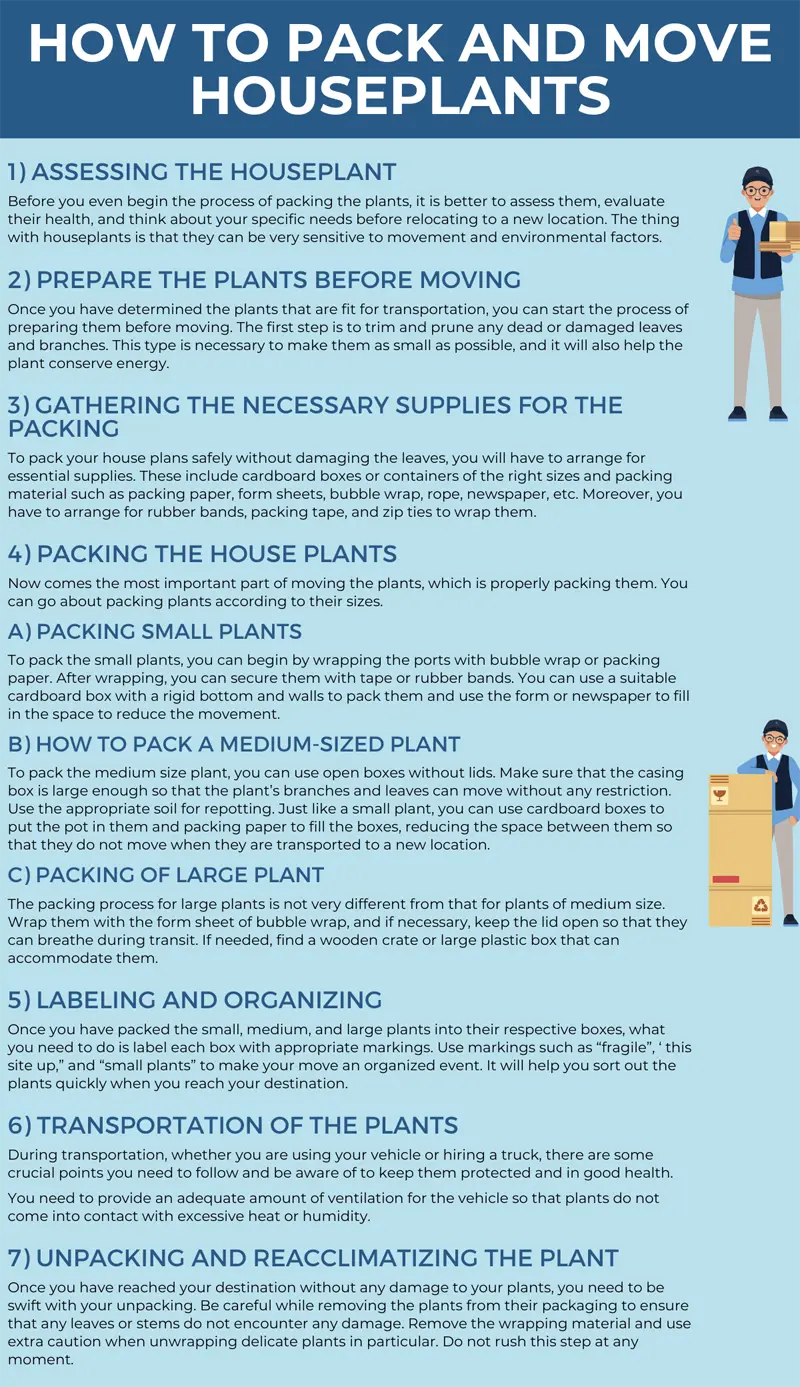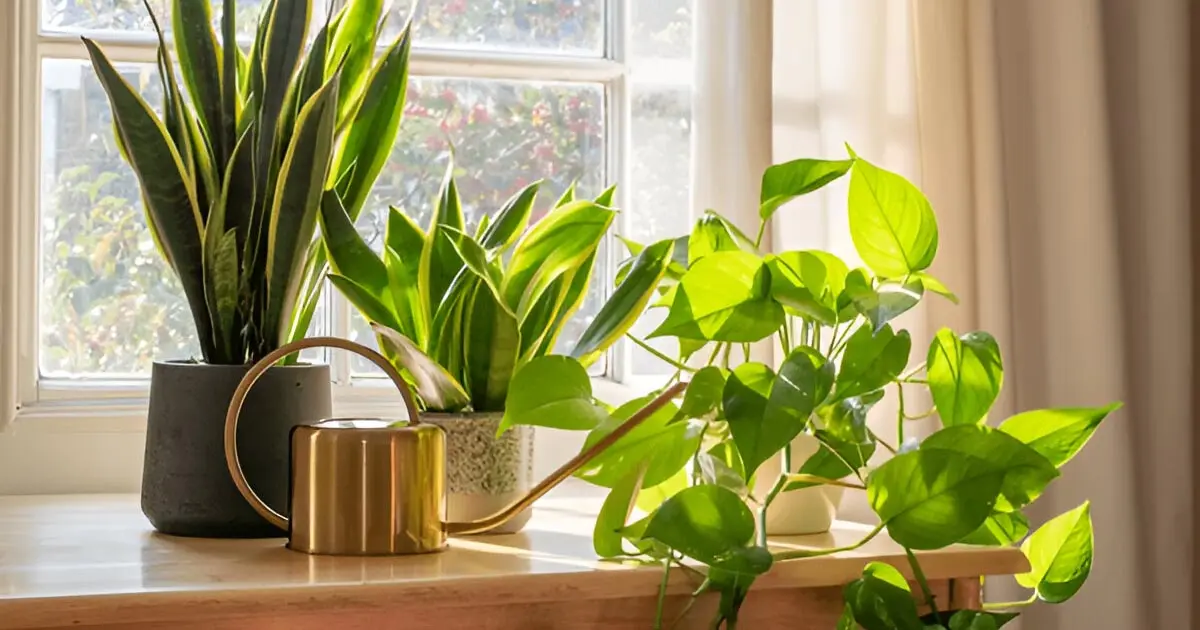When you think about moving your household goods, you have an idea of how to make it happen. You can either do it yourself or hire a professional packers and movers service to complete the process. However, what about houseplants? How can one move the house plants without damaging their leaves while moving from one location to another? They are not nonliving goods but living organisms that have to be taken care of if you’re moving them to a new location; otherwise, they can die or get damaged. The last thing you want is to be at your new location and see your beloved green plants damaged or lifeless.
However, you will be less worried if you know how to go about the process of moving the houseplants without damaging them. And luckily, there are multiple ways in which you can make the transit of your plant a successful event. It begins with assessing the house plans before packing.
1. Assessing the houseplant
Before you even begin the process of packing the plants, it is better to assess them, evaluate their health, and think about your specific needs before relocating to a new location. The thing with houseplants is that they can be very sensitive to movement and environmental factors. There can be some plants that are just not cut out for transportation, and they can be large. It is always better to find new owners for them instead of transporting them to a new location.
2. Prepare the plants before moving
Once you have determined the plants that are fit for transportation, you can start the process of preparing them before moving. The first step is to trim and prune any dead or damaged leaves and branches. This type is necessary to make them as small as possible, and it will also help the plant conserve energy.
If the plants have to be potted again, carry out the step at least one to two weeks before the final move. This will help the plants adjust to the new soil and become less stressed during the relocation.
3. Gathering the necessary supplies for the packing
To pack your house plans safely without damaging the leaves, you will have to arrange for essential supplies. These include cardboard boxes or containers of the right sizes and packing material such as packing paper, form sheets, bubble wrap, rope, newspaper, etc. Moreover, you have to arrange for rubber bands, packing tape, and zip ties to wrap them.
4. Packing the house plants
Now comes the most important part of moving the plants, which is properly packing them. You can go about packing plants according to their sizes.
a) Packing small plants
To pack the small plants, you can begin by wrapping the ports with bubble wrap or packing paper. After wrapping, you can secure them with tape or rubber bands. You can use a suitable cardboard box with a rigid bottom and walls to pack them and use the form or newspaper to fill in the space to reduce the movement.
b) How to pack a medium-sized plant
To pack the medium size plant, you can use open boxes without lids. Make sure that the casing box is large enough so that the plant’s branches and leaves can move without any restriction. Use the appropriate soil for repotting. Just like a small plant, you can use cardboard boxes to put the pot in them and packing paper to fill the boxes, reducing the space between them so that they do not move when they are transported to a new location.
c) Packing of Large plant
The packing process for large plants is not very different from that for plants of medium size. Wrap them with the form sheet of bubble wrap, and if necessary, keep the lid open so that they can breathe during transit. If needed, find a wooden crate or large plastic box that can accommodate them. For additional padding, use packing paper or newspaper to minimize the impact of jolts during transportation.
5. Labeling and organizing
Once you have packed the small, medium, and large plants into their respective boxes, what you need to do is label each box with appropriate markings. Use markings such as “fragile”, ‘ this site up,” and “small plants” to make your move an organized event. It will help you sort out the plants quickly when you reach your destination. The thing with plants is that you need to place them under the sun and in an open environment according to their type. One of the first things you will do after reaching your new destination is to unload and unpack the plants so that they remain healthy and undamaged after the transit.
6. Transportation of the plants
During transportation, whether you are using your vehicle or hiring a truck, there are some crucial points you need to follow and be aware of to keep them protected and in good health.
- You need to provide an adequate amount of ventilation for the vehicle so that plants do not come into contact with excessive heat or humidity.
- Avoid exposing the plant to extreme temperatures or direct sunlight.
- When placing the boxes into the vehicle, go through the discussed process of packing the plants, which results in minimal shaking during transit.
- If you have a climate-controlled vehicle or can arrange one for your plans, that will be the best decision for their life during transit. For long distances, it is recommended that you arrange for a climate-controlled vehicle.
7. Unpacking and reacclimatizing the plant
Once you have reached your destination without any damage to your plants, you need to be swift with your unpacking. Be careful while removing the plants from their packaging to ensure that any leaves or stems do not encounter any damage. Remove the wrapping material and use extra caution when unwrapping delicate plants in particular. Do not rush this step at any moment.
Once you have unwrapped the boxes and got the plants out of the cardboard boxes, reinspect your plans so that if there are any dead leaves or damaged branches, you can trim them if needed.
The sudden change can cause shocks to the plants. Please then take them to their new location and make sure that they get the appropriate light and humidity as per their respective types. Give them ample time to get acclimated to the new environment and surroundings. Put water into their pots regularly and monitor their growth progress. Change the amount of water according to the needs and environment of each plant.
Wrapping up
Packing and moving houseplants to a new location demands careful planning and attention to detail since plants are not general goods but living organisms. By following the steps mentioned in this particular piece of content, you can make sure that the house plans reach your location in good health and unharmed condition.
Follow every step and make the preparation and planning for the moving of your plants in advance so that plants do not come across sudden changes and shocks during transit or once they are at their new location. As mentioned in this post, you need to assess your plants, assess their types, sort out the plants fit for the move, arrange for the necessary packing supplies, and go about labeling and organizing in the right manner. Steps related to unpacking and reclamation have been discussed.

FAQs – How To Pack and Move Houseplants
How Do You Transfer Plants To New Containers Before Moving?
You need to dig out a hole that should be at least 3 to 6 inches away from the base of your plant. Dig deep till you reach the root. Carefully extract the plant along with the roots without causing any damage.
Why Gifting Some Plants To Others Is A Good Idea?
If you have large houseplants which are just too big and extracting them for relocation seems like a lot of work, it is always better to gift them to your friend, relative, or neighbor.
What Are Some Of The Cautions You Need To Take Care Of When Transporting Plants?
Here are the precautions you can take when moving plants
- If you are relocating the plants in the summer, put them out of the sun and wind.
- The root ball of houseplants should be kept moist, and complete the replanting as soon as possible.
- Complete the inspection of the new location in advance so that you can replant the plants at a faster pace.
- If you are moving the plants in the winter, don’t water them inappropriately.
- If you are wary of wind damage, transport your houseplants in a closed vehicle. For long distances, keep a check if the plants are moist during a move.



